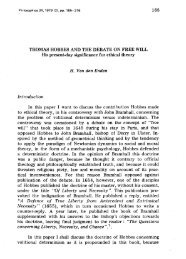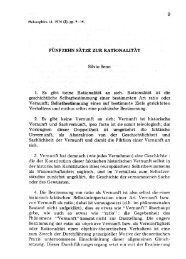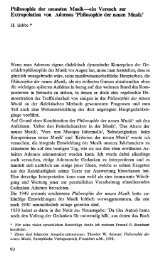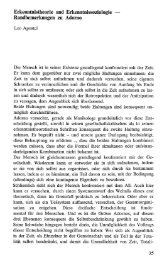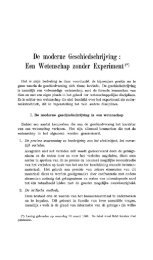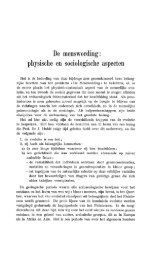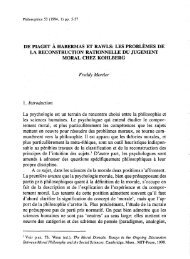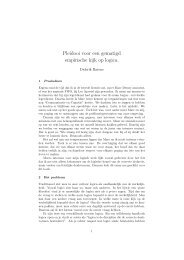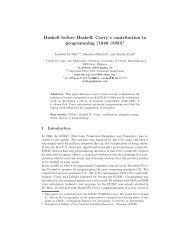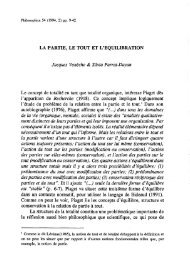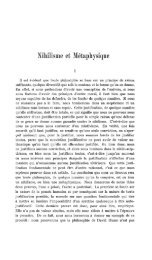Ferdinando Arzarello, Valeria Andriano, Federica Olivero & Ornella ...
Ferdinando Arzarello, Valeria Andriano, Federica Olivero & Ornella ...
Ferdinando Arzarello, Valeria Andriano, Federica Olivero & Ornella ...
You also want an ePaper? Increase the reach of your titles
YUMPU automatically turns print PDFs into web optimized ePapers that Google loves.
92 F. ARZARELLO, V. ANDRIANO, F. OLIVERO, O. ROBUTTI<br />
can be explained using suitable mathematical (and traditional) tools of<br />
analysis.<br />
We wish to conclude the paper with two more observations. First,<br />
the works of Hintikka and Remes (1974) and Maenpaa (1997) have used<br />
deductive logic to interpret the configurational aspects of analysis; they<br />
used essentially the systems of Natural Deduction with (in the last papers)<br />
the machinery of types of Martin-Lof, see Maenpaa (1997), that is in the<br />
version which shows more connections" with computer science. They<br />
showed that "the Greek method of geometrical analysis can be generalised<br />
into a method of solving all kinds of mathematical problems in type<br />
theory by taking into account inductively defined problems, which are<br />
characteristic of programming. The method known as top-down programming<br />
turns out to be a special case of analysis." (Maenpaa, 1997, p.226).<br />
It is intriguing (and corroborating the ideas above) that we find also from<br />
another approach a reduction to the same formal machinery!<br />
Second -as a further corroboration- the same strategy (of looking for<br />
suitable economic hypothesis in a backward approach) that we have<br />
analysed above is at the basis of many programs for automatic theorem<br />
proving in elementary geometry, e.g-., those which use the Grobner<br />
Buchberger algorithm, see Chou (1988): the algebraic varieties, which<br />
are the geometric counterpart of the algebraic symbolism incorporated<br />
into the software, are the natural model of a dynamic logic, where the<br />
method of resolution means looking for a new" economic hypothesis,<br />
which allows to restrict the domain of validity of a supposed conjecture,<br />
in order that this really becomes true, see Cox et al. (1992), pp.280-296.<br />
The strategy is very similar to that illustrated in problem [2], modulo the<br />
algebraic translation.<br />
REFERENCES<br />
Universita di Torino<br />
<strong>Arzarello</strong> F., Michelletti C., <strong>Olivero</strong> F., Paola D. and Robutti O. (1998a),<br />
A model for analysing the transition to formal"proofs in geometry. In:<br />
A. Olivier and K. Newstead (eds.), Proveedings of PME22. Stell enbosch,<br />
vol. 2, 24-31.<br />
<strong>Arzarello</strong> F., Gallino G., Michelletti C., <strong>Olivero</strong> F., Paola D. and Robutti<br />
O. (1998b). Dragging in Cabri and modalities of transition form con-



